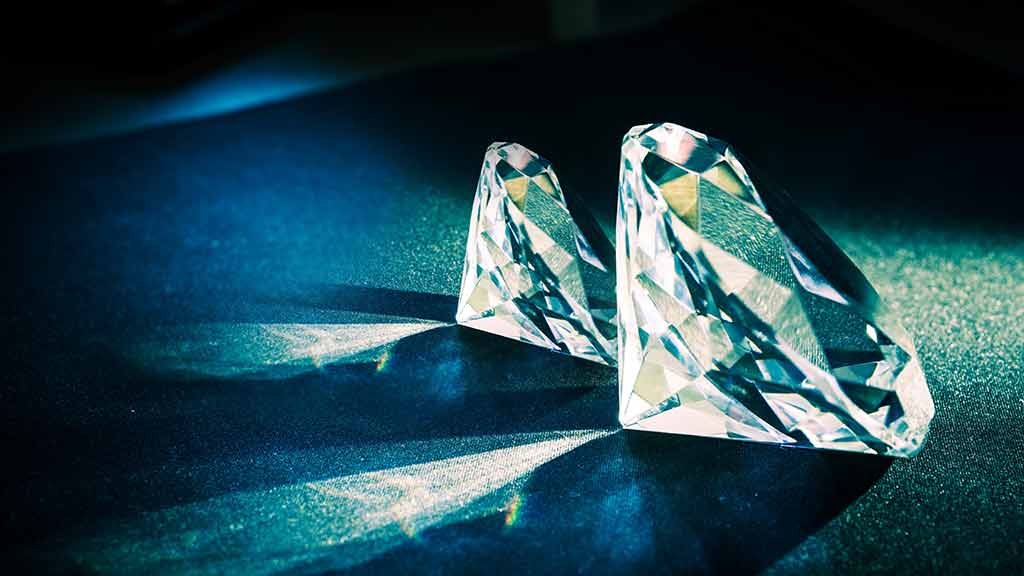Unlocking the Brilliance: The Rise of Recycled Gold in Jewelry Design
In today’s world, where sustainability is becoming increasingly vital, the jewelry industry is undergoing a significant transformation. One of the notable shifts is the growing adoption of recycled gold in jewellery production. In this article, we’ll explore the concept of lab grown diamonds, its benefits, processes, and its impact on the jewelry industry and the environment.
Table of Contents
Introduction
What is Recycled Gold?
Recycled gold, also known as reclaimed gold or eco-friendly gold, refers to gold that has been previously used in jewelry, industrial applications, or electronic components and is reprocessed to extract pure gold for reuse.
Importance of Sustainability in Jewelry Industry
The jewelry industry has traditionally relied heavily on mining to meet the lab grown diamonds for gold. However, the environmental and social impacts of mining, such as deforestation, water pollution, and human rights abuses, have led to a growing demand for more sustainable alternatives.
History of Gold Recycling
Ancient Methods
Gold recycling is not a new phenomenon and can be traced back to ancient civilizations, where gold was melted down and reused to create new ornaments and artifacts.
Modern Techniques
In recent decades, advancements in technology have made gold recycling more efficient and economically viable. Today, sophisticated processes are used to extract gold from various sources, including old jewelry, electronic waste, and industrial by-products.
Environmental Impact of Traditional Mining
Deforestation and Habitat Destruction
Traditional gold mining often involves clearing large areas of land, leading to deforestation and loss of biodiversity.
Water Pollution
Mining activities can contaminate water sources with toxic chemicals such as cyanide and mercury, posing serious risks to aquatic ecosystems and human health.
Carbon Emissions
The extraction and processing of gold also contribute to greenhouse gas emissions, exacerbating climate change.
Benefits of Using Recycled Gold in Jewellery
Reduction of Environmental Impact
By using recycled gold in jewellery, jewelry manufacturers can significantly reduce the need for new mining, thereby minimizing environmental degradation and carbon emissions.
Conservation of Natural Resources
Recycling gold helps conserve finite natural resources and reduces the demand for virgin materials, such as ores and minerals.
Ethical Considerations
Recycled gold offers a more ethical alternative to newly mined gold, as it does not contribute to the exploitation of workers or communities in mining regions.
Certifications and Standards
Fairtrade Gold
Fairtrade gold certification ensures that gold has been responsibly sourced from small-scale mining operations that meet strict social, environmental, and labor standards.
Responsible Jewelry Council (RJC)
The RJC provides certification and standards for responsible business practices in the jewelry supply chain, including ethical sourcing and environmental management.
Process of Recycling Gold
Collection and Sorting
Recycled gold is sourced from various channels, including old jewelry, electronic waste, and industrial scrap, which are sorted and processed to extract pure gold.
Refining
The refining process involves melting the collected gold and removing impurities to obtain high-purity gold suitable for lab grown diamonds.
Alloying
To enhance its strength and durability, recycled gold is often alloyed with other metals such as silver, copper, or palladium.
Quality of Recycled Gold
Purity Levels
Recycled gold can achieve the same purity levels as newly mined gold, with 24-karat gold being the purest form.
Durability
Contrary to misconceptions, recycled gold is as durable and long-lasting as newly mined gold, making it suitable for a wide range of jewelry designs.
Design Trends in Recycled Gold Jewelry
Innovation and Creativity
Jewelry designers are increasingly incorporating recycled gold into their designs, resulting in unique and innovative pieces that appeal to environmentally conscious consumers.
Market Demand
There is a growing demand for sustainable and ethically sourced jewelry, driving the popularity of recycled gold among consumers and retailers alike.
Cost Comparison
Recycled Gold vs. Newly Mined Gold
While the cost of recycled gold jewelry may vary depending on factors such as design and craftsmanship, it is generally comparable to newly mined gold jewelry.
Consumer Awareness and Education
Transparency in Supply Chains
Consumers are becoming more aware of the environmental and social impact of their purchasing decisions and are demanding greater transparency from jewelry brands regarding the origin of their materials.
Making Informed Purchases
Educating consumers about the benefits of recycled gold and providing information on certification schemes can empower them to make more sustainable choices when buying jewelry.
Challenges and Limitations
Supply Chain Traceability
Ensuring the traceability and authenticity of recycled gold throughout the supply chain remains a challenge for the industry.
Perceptions and Misconceptions
There are still misconceptions surrounding recycled gold, including concerns about its quality and durability, which may hinder its widespread adoption.
Global Adoption and Initiatives
Companies Embracing Sustainability
Many jewelry brands and manufacturers are incorporating sustainability into their business practices, including the use of recycled gold and other eco-friendly materials.
Government Policies and Regulations
Governments around the world are implementing regulations and initiatives to promote responsible mining practices and encourage the use of recycled materials in the jewelry industry.
Future Outlook
Growth Potential
The market for recycled gold jewelry is expected to continue growing as consumers become more conscious of environmental and ethical issues.
Technological Advancements
Advancements in recycling technologies and processes are making it easier and more cost-effective to recycle gold, further driving the adoption of sustainable practices in the jewelry industry.
Conclusion
In conclusion, recycled gold offers a sustainable and ethical alternative to newly mined gold in the jewelry industry. the reliance on traditional mining methods, recycled gold helps mitigate the environmental and social impacts associated with gold extraction. Moreover, it addresses growing consumer concerns about ethical sourcing and sustainability in the jewelry sector.
As consumers become increasingly aware of the environmental footprint of their purchases, the demand for recycled gold jewelry is expected to rise. Jewelry brands and manufacturers have a crucial role to play in promoting transparency and responsible sourcing practices, thereby empowering consumers to make informed decisions.

